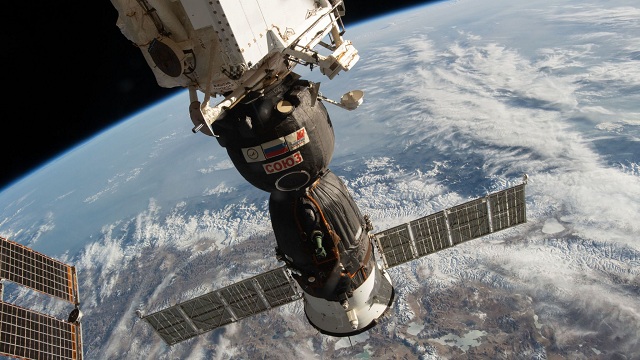“Don’t lose hope. Be courageous” Says PM Modi to ISRO Chief
 BANGALURU : Years of hard work literally came to a naught for ISRO on Saturday after it lost communication with Moon lander Vikram, and no amount of words could put it right for the scientists at ISTRAC here.
BANGALURU : Years of hard work literally came to a naught for ISRO on Saturday after it lost communication with Moon lander Vikram, and no amount of words could put it right for the scientists at ISTRAC here.
Despite a motivational speech by Prime Minister Narendra Modi, who had rushed in to watch the mission’s success on Friday night and then again was with the Team Chandrayaan-2 to speak to them, ISRO Chairman K Sivan could not hold his tears and broke down as the PM was about to leave.
In a very visible emotional outburst, Sivan was seen in tears. Modi who was being accompanied by the scientist on his way out, immediately hugged him and held him. Words were exchanged as a disturbed and disappointed Sivan took time to gain his composure.
Though the expected soft-landing of the Vikram Lander was not accomplished, the Chandrayaan-2 mission is far from over. In fact, in science terms, very little has been lost. But in terms of optics, it is definitely a huge setback for the Indian Space Research Organisation (ISRO).
The lander had begun its descent normally and, for the first 13 minutes, decelerated as per the plan. But after that, the deceleration does not seem to have gone ahead as per the requirement. The most possible consequence of this scenario is that the lander went on to crash-land on the moon’s surface with a speed greater than was required for a safe landing.
But in the most optimistic case, it could only be a problem of communication failure. It is possible that Vikram landed on the moon as planned, but midway through its journey stopped communicating with the ground station.
The chances of this having happened are extremely slim, considering that the graph on the screens of the control room depicting the expected and actual deceleration did begin to diverge after 13 minutes from the descent. So the speed was noticed to be larger than required even before communication was lost.
It is possible to re-establish contact with an object in space with which communication has been lost. It has happened before, even with ISRO. Some years ago, one of the satellites had lost contact with a ground control, and after a lot of effort and several manoeuvres, it was re-established. But that satellite was in orbit and not hurtling towards a planetary body at great speeds.
The lander and rover were supposed to have a lifespan of only 14 days, and their science output would have been limited. The two instruments on the Pragyaan Rover were supposed to collect information to assess the elemental composition of the moon’s surface and determine the relative abundance of different elements near the landing site.
Meanwhile, Azzording to ISRO chief efforts to re-establish link with Chandrayaan-2 lander to continue for next 14 days. The lander had three instruments which were meant to study the lunar atmosphere, its temperature gradient and thermal conductivity.
One of the instruments was also supposed to measure seismic activity on the moon’s surface near the site of landing.“In terms of science, this mission is very much alive and has a lot to deliver. It is not yet over,” said a retired ISRO scientist.
Efforts to contact the Vikram lander will continue for the next 14 days, ISRO chairman K Sivan said in an interaction with national broadcaster Doordarshan today. This was his first reaction ever since the lander fell silent in the early hours of Saturday.
Dr Sivan blamed faulty execution in the last stage of the operation — when the Vikram lander was 2.1 km above the lunar surface — for the loss of communication. “The last part of the operation was not executed in the right manner. It was in that phase that we lost link with the lander, and could not establish contact subsequently,” he told Doordarshan.
The scientist had last spoken minutes after ISRO lost contact with the lander around 1:55 am, and his words left millions across the country dejected. “Vikram lander’s descent went as planned and normal performance was observed up to an altitude of 2.1 km. Subsequently, the communication from the lander to the ground station was lost. The data is being analysed,” he said.
Dr Sivan described PM Modi as a “source of inspiration and support”. “His speech gave us motivation. In his speech, the special phrase that I noted was: One should should not aim for results with science but for experiments, for experiments will lead to results,” he said.
Things seemed to be going just fine until the final stage of the operation, described by ISRO as “15 minutes of terror”, during which the lander was supposed to set itself down on the Moon’s south pole at 1:55 am.
Applause greeted the successful completion of each stage of its descent, and the graph showed it going down the normal trajectory. In its last tweet posted at 1:49 am, ISRO said: “Rough breaking of #VikramLander ends and fine braking phase starts. #Chandrayaan2 #ISRO.”
Just then, a group of scientists led by Dr Sivan walked over to PM Modi, who nodded in grave acknowledgment before making his way down the stairs. The scientists appeared to be comforting Dr Sivan..”(With Agency Inputs ).

